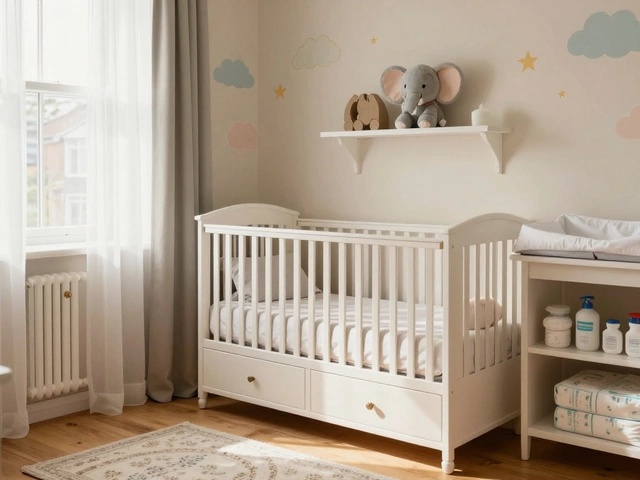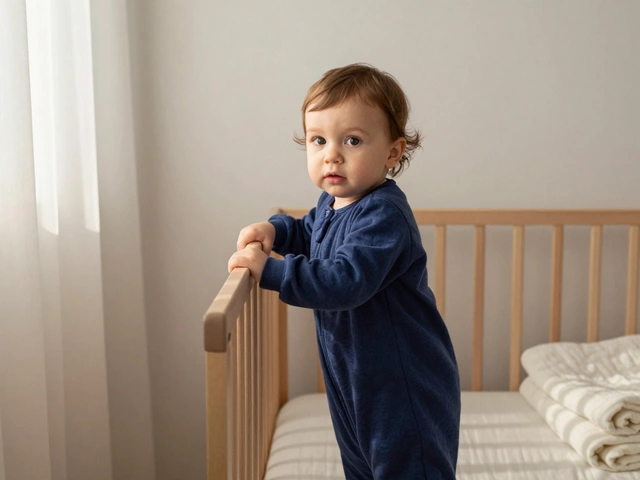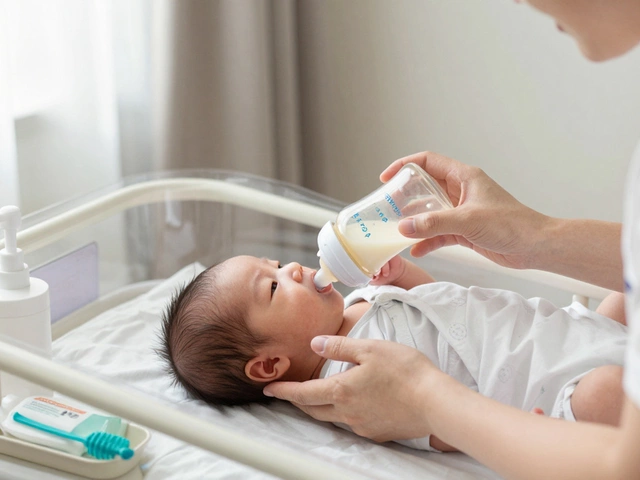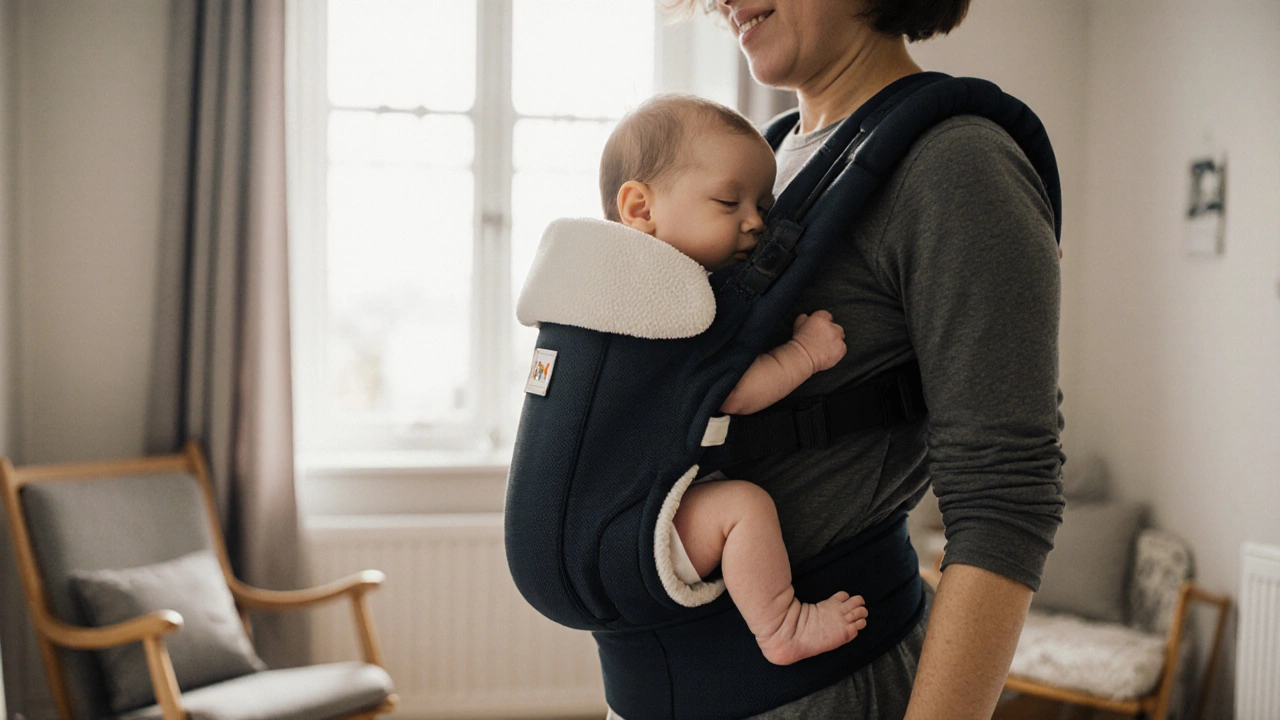
Choosing the right baby carrier for a newborn isn’t just about convenience-it’s about safety, support, and comfort. Newborns have delicate spines, weak necks, and need full body support. Not every carrier designed for older babies works for a tiny infant. The wrong one can put strain on their hips, restrict breathing, or leave their head flopping dangerously. So what actually works?
What Makes a Carrier Safe for Newborns?
A good newborn carrier must hold your baby in a natural, curled-up position-like they were in the womb. Their knees should be higher than their bottom, forming a gentle M-shape. Their head needs full support, especially if they can’t hold it up yet. Their chin shouldn’t be pressed into their chest, which can block their airway. And the carrier must keep them close enough to kiss the top of their head.
The American Academy of Pediatrics recommends carriers that support the baby’s entire body, including the head and neck, until around four months. Look for carriers labeled as suitable for newborns from birth (typically 7-12 lbs). Avoid ring slings or pouch carriers unless they’re specifically designed with a newborn insert or adjustable panel that keeps the baby in a secure, upright position.
Top Types of Carriers for Newborns
There are three main types of carriers that work well for newborns: structured carriers with inserts, woven wraps, and stretchy wraps. Each has pros and cons.
Structured Carriers with Newborn Inserts
Brands like Ergobaby, BabyBjörn, and Tula offer carriers that come with removable newborn inserts. These inserts create a snug, cocoon-like space for tiny babies, keeping their legs in the proper spread-squat position and their head supported. Once your baby reaches 12-15 pounds and can hold their head up, you remove the insert.
These carriers are easy to put on and adjust, even with one hand. They’re great for parents who want something quick and reliable. The downside? You have to buy the insert separately with some brands, and they can feel bulky on a very small baby.
Woven Wraps
Woven wraps are long pieces of tightly woven fabric-usually cotton, linen, or blends-that you tie around your body. They’re highly adjustable and can cradle a newborn perfectly. When done right, a woven wrap mimics the shape of a hammock, supporting the baby from knee to knee, head to bottom.
They’re ideal for newborns because you can fine-tune the tension and positioning. Many parents use them from day one until toddlerhood. The learning curve is steep, though. It takes practice to tie them safely. YouTube tutorials help, but don’t rush. Watch a certified babywearing educator if you can.
Popular brands include Didymos, Girasol, and Stokke. Look for wraps that are 100% cotton and at least 4.6 meters long (size 6) for newborns.
Stretchy Wraps
Stretchy wraps are made from soft, knit fabric-like a giant, super-stretchy t-shirt. They’re easier to use than woven wraps and feel more like a giant scarf. Many hospitals in the UK use them because they’re gentle on newborns and simple for first-time parents.
They’re perfect for snuggling, feeding, and short walks. But they’re not meant for long carries or heavy babies. Once your baby hits 15 pounds, the fabric starts to lose its support. Brands like Moby, Solly, and Wrapsody are popular. Avoid cheap knock-offs-they stretch too much and can slip.
What to Avoid
Some carriers look cute but are dangerous for newborns. Stay away from:
- Front-facing carriers (baby facing out)-newborns can’t support their necks, and their spine isn’t ready for that position.
- Soft-structured carriers without a newborn insert-your baby’s head will slump forward.
- Ring slings without proper head support-you need to constantly adjust to keep their chin off their chest.
- Back carriers-never use these for a newborn. Their spine and neck aren’t developed enough.
Also, avoid carriers that don’t have a clear weight range for newborns. If the label says ‘birth to 45 lbs,’ check the fine print. Many of these require a separate insert or only work from 8 or 9 pounds.
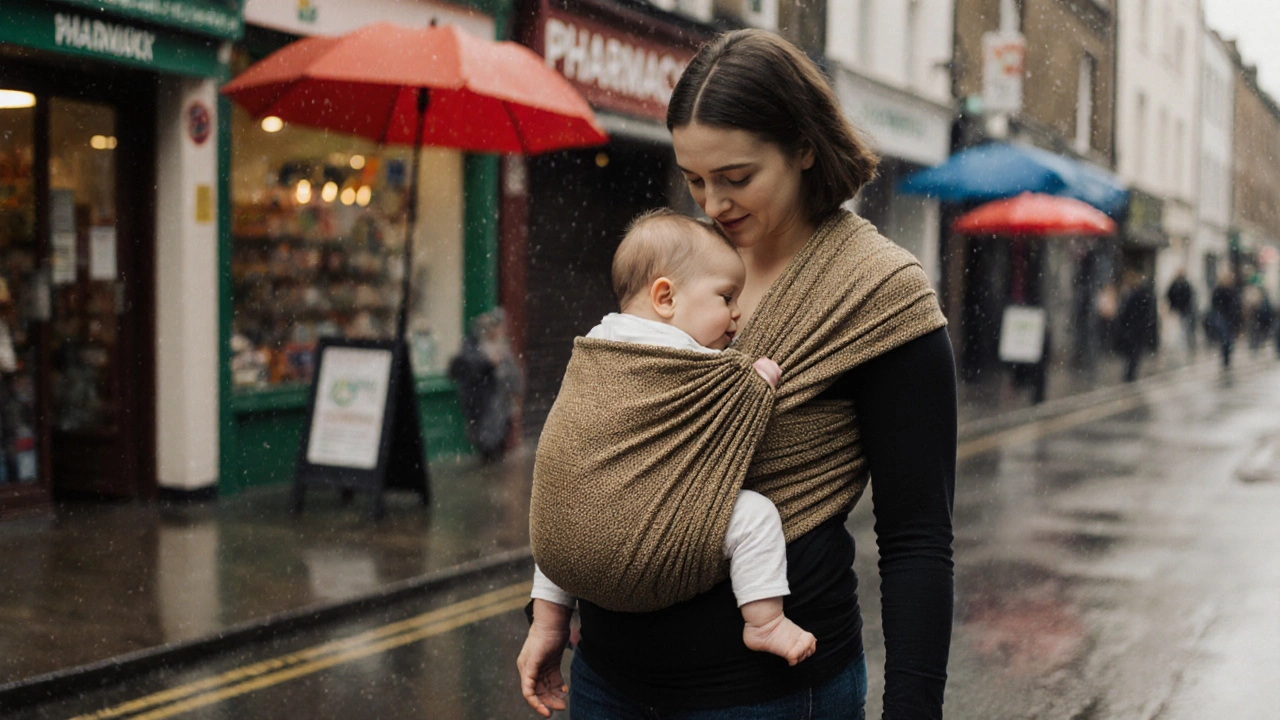
How to Test a Carrier Before Buying
Don’t just buy online. Try before you commit. Borrow from a friend, visit a babywearing group, or go to a store that lets you test carriers with a doll or a baby simulator.
Here’s what to check:
- Can you get your baby into the carrier without lifting their legs too high?
- Does their head rest naturally against your chest, with no gap behind the neck?
- Can you see their face at all times without bending over?
- Does the fabric feel firm enough to hold them upright, not just drape loosely?
- Is the waistband wide and padded? A narrow band digs into your hips.
Also, try walking around. Does your baby feel secure? Do you feel balanced? If you’re leaning back or shifting your weight constantly, it’s not right.
Real-Life Tips from Parents
In Bristol, where rain is common and sidewalks are narrow, many parents swear by stretchy wraps for quick trips to the pharmacy or post office. One mum said, ‘I wore my daughter in a Solly wrap for six weeks straight. She slept through every errand.’
Another parent switched from a structured carrier to a woven wrap after her baby kept slipping down. ‘The insert didn’t fit right,’ she said. ‘The wrap hugged her like a second skin.’
For dads or partners who want something easy, structured carriers with inserts often win. ‘I’m not good with tying knots,’ one dad admitted. ‘But with the Ergobaby insert, I got it right on the first try.’
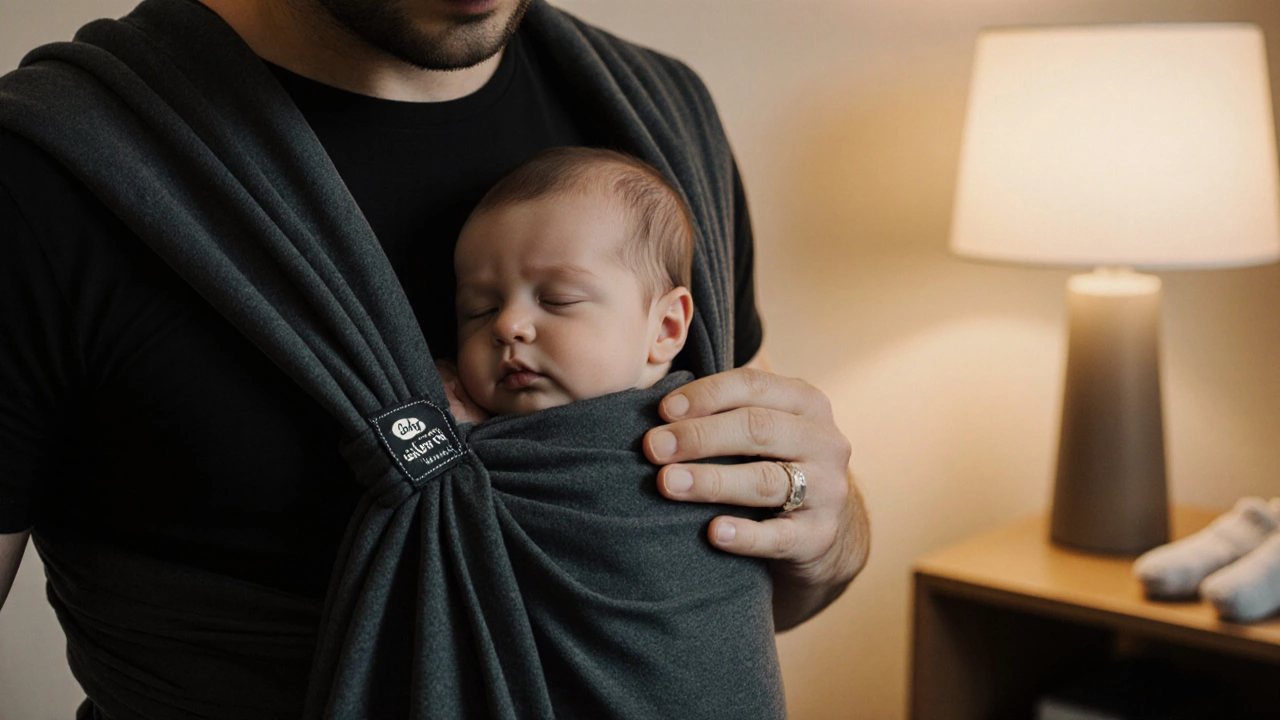
When to Move On
Most newborns outgrow their carrier’s newborn settings between 3 and 6 months. Signs your baby is ready to transition:
- They can hold their head up steadily without support.
- They’re pushing their legs out straight instead of staying curled.
- The insert feels too tight or cramped.
- They start looking around and want to see the world-this is when front-facing carriers become safe.
Don’t force the transition. If your baby still seems comfy and supported, keep using the insert. Some babies stay in newborn mode longer, especially if they were premature.
Final Checklist Before You Buy
Before you hand over your card, ask yourself:
- Is this carrier approved for babies from birth (7 lbs or more)?
- Does it include a newborn-specific insert or adjustment?
- Can I adjust the head and neck support easily?
- Is the waistband wide and padded?
- Can I use it comfortably for 30+ minutes without strain?
- Is it machine washable? (Newborns spit up, pee, and poop often.)
If you answer yes to all of these, you’ve found a winner.
What’s the Best Carrier for Newborns?
There’s no single ‘best’-it depends on your body, your baby, and your lifestyle.
If you want ease and reliability: Ergobaby Omni 360 with newborn insert.
If you want maximum comfort and flexibility: Didymos woven wrap.
If you want simplicity and softness: Solly Baby Wrap.
All three are widely used in the UK, recommended by midwives, and have strong safety records. The key isn’t the brand-it’s the fit. A well-fitted carrier feels like an extension of your body. Your baby should feel safe, and you should feel confident.
Can I use a baby carrier right after birth?
Yes, as long as the carrier is designed for newborns and supports their head, neck, and spine properly. Most hospitals in the UK encourage skin-to-skin contact using stretchy wraps or structured carriers with inserts. Always check the weight limit-most require your baby to be at least 7 pounds.
Is a baby wrap better than a structured carrier for newborns?
It depends. Wraps offer more customization and can cradle a newborn perfectly, but they take practice. Structured carriers with inserts are easier to use and more consistent. Many parents use both: wraps for quiet time at home, structured carriers for errands. Neither is inherently better-just different tools for different moments.
Do I need a newborn insert for my baby carrier?
If your carrier says it’s for ‘birth to 45 lbs’ but doesn’t mention an insert, you likely need one. Newborns need a snug, curved seat to keep their hips in the right position. Without it, their legs dangle, which can stress their joints. Always use the insert until your baby is at least 12-15 pounds and can hold their head up.
Can I carry my newborn on my back?
No. Back carrying is not safe for newborns. Their spine and neck muscles aren’t developed enough to support their head in that position. Wait until your baby is at least 6 months old and can sit up unassisted before trying a back carry.
How long can I carry my newborn in a carrier each day?
There’s no strict limit. Many parents carry their newborns for hours a day without issue. The key is to watch for signs of discomfort-fussiness, arching back, or pulling away. Take breaks if needed. Also, switch sides every 20-30 minutes to avoid straining one hip or shoulder.




